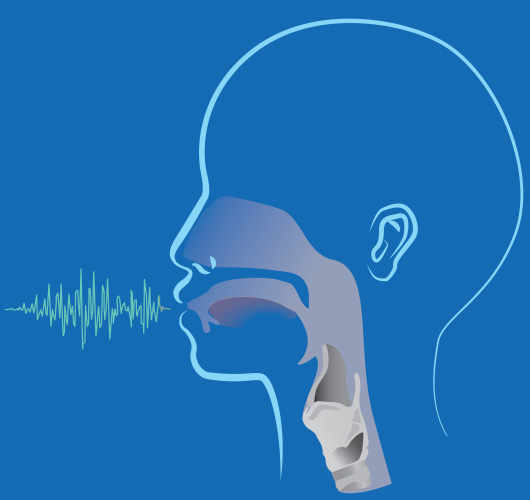In the new movie Her, Joaquin Phoenix portrays a lonely writer who ends up falling for the Siri-like voice assistant of his new operating system, played by Scarlett Johansson. It’s an easy story to buy into because the computerized voices in today’s gadgets have become so convincing that having a relationship with one doesn’t seem like much of a stretch.
That is, unless you’re speech impaired. The portable gadgets that convert text into digital speech, known as Assistive Communication Devices, seem to be missing out on all the new advances. Compared to GPS devices and smartphones, the voice selection is so poor that Dr. Rupal Patel of Northeastern University estimates that approximately 60% of users today have settled on the same default voice, “Perfect Paul”.
Invented in the 1980’s, Perfect Paul is best recognized as the voice used by Stephen Hawking, but because it’s still the least agreeable of the assistive voices out there, it’s used by both women and men, the young and old alike. This leads to the incredibly ridiculous scenario where an entire room full of people can all end up speaking as Professor Hawking, as amusingly captured in Lee Ridley’s short film, Voice by Choice.
“We wouldn’t dream of fitting a little girl with the prosthetic limb of a grown man” says Dr. Patel. “Why would we give her the same prosthetic voice?”
To give people a synthesized voice of their own Dr. Patel is launching a donor program, allowing healthy people to record and submit their own voices for use. Her organization VocaliD is in the early stages of accepting donors and matching them up to disabled recipients by gender, accent, size, and age.
They begin by having the disabled user record as much audio as possible. They may not be able to form words, but most can produce sound like this:
The donor is then asked to spend three to four hours recording a special script, one that performs all the actions and pronunciation that goes into creating digitized speech.
The VocaliD team then blend the two recordings together, taking the speech patterns and pronunciation of the donor and giving them the pitch and tone of the disabled recipient.
The result is a unique voice, unlike any other. So far the first series of custom voices have set emotions flowing as families and recipients say they can definitely hear their son or daughter in the recording. It’s more than words, there’s a quality to a person’s voice that we instinctively pick up on and know. To families and friends the VocaliD voices ring true. It’s about expressing yourself, not just with language, but with a personality that’s all your own.
Dr. Rupal Patel on stage at TEDWomen 2013, San Francisco
In a talk for TedWomen that will be posted online soon, Patel relates the experience of a nine year-old boy in the program named William. After receiving a donor-created voice, his response was “Never heard me before.”
“Imagine carrying around someone else’s voice for nine years,” Patel said on stage, “and then finding your own.”





